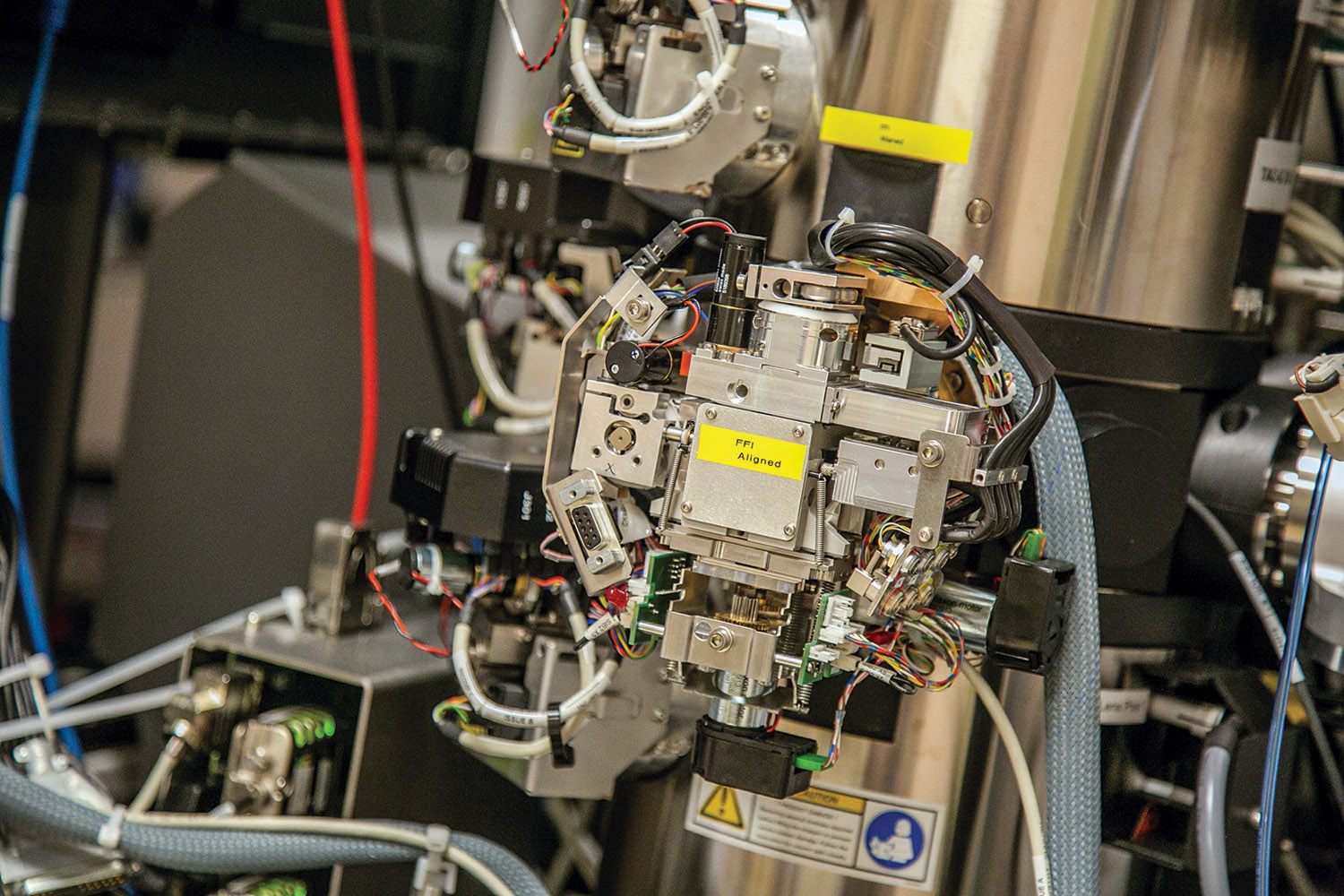Nebraska’s newest core research facility is revolutionizing understanding of molecular foundations and boosting the university’s expertise in the biomedical and agricultural sciences.
The CryoEM Core Facility houses the state’s first cryo-electron microscope – one of a handful regionally. The acquisition of cutting-edge equipment is expected to strengthen research ties with other University of Nebraska institutions and attract university, industry and national laboratory partnerships.

Cryo-EM microscopy is a powerful imaging technique for observing biological molecules, complexes and cells at near-atomic resolution. Biological samples are cooled to cryogenic temperatures of at least negative 153 degrees Celsius, preserving the structure and function of the specimens more effectively than traditional methods.
Although the technology has existed for several decades, advancements in recent years have turned cryo-EM into a leading tool for research in drug discovery and development, plant biology, infectious diseases, pathology, animal science and more.
During a grand opening celebration, university leaders praised the faculty for envisioning how a cryo-EM facility could bolster Nebraska’s research endeavors.
The Nebraska Center for Integrated Biomolecular Communication allocated funding from its National Institutes of Health Centers of Biomedical Research Excellence award to jump-start the effort. Soon, the project received support from the Institute of Agriculture and Natural Resources’ Agricultural Research Division, College of Arts and Sciences, College of Engineering and the Office of Research and Economic Development.

A renovation of the Ken Morrison Life Sciences Research Center created space for high-throughput equipment, including a 200kV Glacios Cryo-EM Transmission Electron Microscope, a Falcon4i electron detector camera, aberration-free image shift and fringe-free imaging.
The Nebraska Center for Biotechnology, which has a long record of successfully managing life sciences research cores, oversees the cryo-EM core.
Already, researchers are using the equipment to develop inhibitor drugs to treat the Ebola virus; design three-dimensional RNA nanostructures and nanomachines; study large biomolecular complexes; and investigate plant and animal health, among other uses.
“We are paving the way for transformative discoveries and research that advance the state of Nebraska, the nation and the world,” said Sherri Jones, former interim vice chancellor for research and economic development. “This is just the beginning of discoveries to come.”
Additional content
The high-throughput equipment includes a 200kV Glacios Cryo-EM Transmission Electron Microscope, a Falcon4i electron detector camera, aberration-free image shift and fringe-free imaging.
